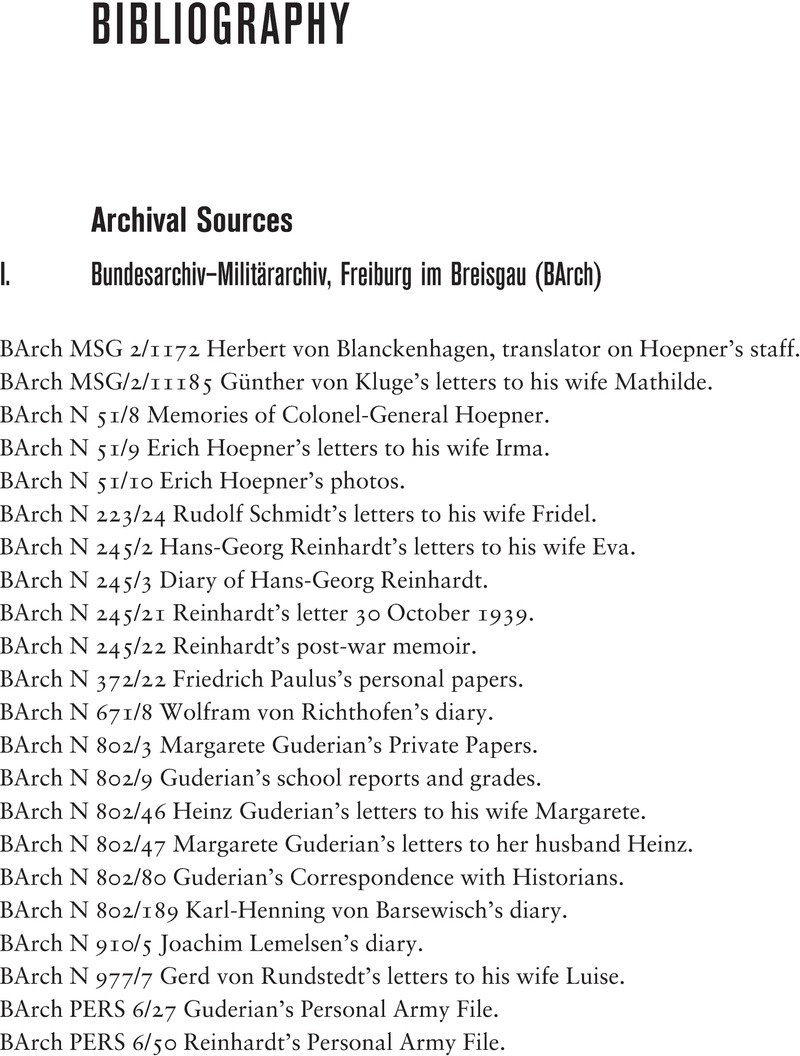Book contents
- Hitler’s Panzer Generals
- Hitler’s Panzer Generals
- Copyright page
- Dedication
- Contents
- Figures
- Acknowledgements
- Introduction
- 1 The Letters of the Panzer Generals
- 2 The Private Generals
- 3 The Public Generals
- 4 The Criminal Generals
- 5 The Military Generals
- Conclusion
- Afterword
- Notes
- Bibliography
- Index
- References
Bibliography
Published online by Cambridge University Press: 04 May 2023
- Hitler’s Panzer Generals
- Hitler’s Panzer Generals
- Copyright page
- Dedication
- Contents
- Figures
- Acknowledgements
- Introduction
- 1 The Letters of the Panzer Generals
- 2 The Private Generals
- 3 The Public Generals
- 4 The Criminal Generals
- 5 The Military Generals
- Conclusion
- Afterword
- Notes
- Bibliography
- Index
- References
Summary

- Type
- Chapter
- Information
- Hitler's Panzer GeneralsGuderian, Hoepner, Reinhardt and Schmidt Unguarded, pp. 291 - 310Publisher: Cambridge University PressPrint publication year: 2023



